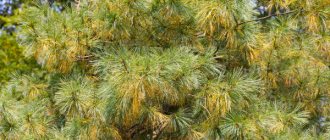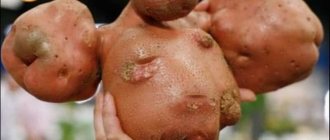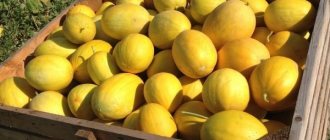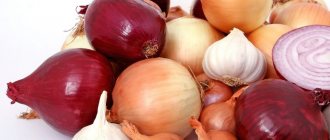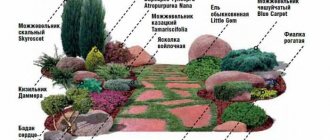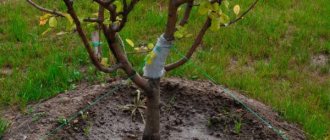Forest berries: list with names and photos, differences between edible and poisonous, beneficial properties
The gifts of the forest are a real storehouse of vitamins and useful micro- and macroelements, with the help of which a person can not only diversify their diet, but also strengthen the body’s defenses, and also get rid of many diseases. In addition to medicinal roots and herbs, wild berries have special nutritional and medicinal value. Before you go into the forest for them, you need to carefully study the information about the types of wild berries. Thanks to photos and detailed descriptions of each variety, you can easily distinguish poisonous berries from healthy ones.
Red Ribes
Calorie content: 38 kcal per 100 g
The berry is not inferior in its healing properties to black currants. And even if it contains less vitamin C, it contains more vitamins P and A. In terms of iodine content, red currants can compete with overseas guests - persimmons and feijoas. Red currants contain a lot of coumarins - substances that protect against increased blood clotting and reduce the risk of thrombosis. Allergy sufferers can eat the berries without fear.
Photo: AIF/Roman Prokhorov
Tip: buy dry and undamaged berries. Currants can remain on the bottom shelf of the refrigerator for no more than two days. But it keeps well when frozen.
Article on the topic
Spiky vitamins. What are the benefits of raspberries and blackberries?
What is the difference between edible and inedible berries?
Poisonous types of berries can be identified by the following characteristics:
- When picking berries, preference should be given only to those bushes that are favored by birds and animals. If the fruits have numerous bite marks, then the berries are suitable for consumption.
- Almost all types of poisonous berries have a pronounced bitter, astringent and tart taste, while specimens that are safe for humans have a juicy sour or sweet taste.
- The small round berries with glossy black or red skin are considered especially poisonous.
List of the most popular wild berries
There are many berries growing in our forests. The list of the most popular includes the following names:
Blueberries and their beneficial properties
This low-growing shrub grows mainly in the tundra and northern latitudes. Favorite places to grow are swamps and pine forests. The berries have a dark blue or black tint, staining (blackening) the hands and mouth. It is due to this property that the plant is called blueberry. The red flesh has a sweet, juicy taste.
The berry contains many valuable components:
- vitamins A, B and C;
- manganese;
- magnesium;
- calcium;
- flavonoids.
Due to the content of such useful components as tannins, anthocyanins and pectins, the plant is widely used in medical and cosmetology practice for:
- stopping diarrhea;
- treatment of scurvy, diabetes, eye diseases, damage to the digestive system;
- accelerating the healing of burns and ulcers;
- elimination of stomatitis and gingivitis;
- skin rejuvenation.
Blueberries ripen between July and September. Like any other fruit, it is recommended to pick this berry in the cool part of the day - in the morning or evening. The main disadvantage of this plant is that when consumed in large quantities it causes constipation.
Forest raspberry
It is believed that the name raspberry has an ancient Indo-European root meaning “blue” or “black” (“melas” is translated from Greek as “black”). This subshrub can reach 2.5 meters in height. Favorite places of growth are forest clearings, wooded areas, river banks. Typically, wild raspberry bushes are strewn with many red fruits. However, in the wild you can find berries of yellow and black shades.
The bright red pulp of the hairy fruit, which has an exquisite sweet taste and pleasant aroma, contains many grains. In central Russia, the shrub bears fruit from mid-July to the end of August.
The berries contain many valuable components:
- glucose;
- fructose;
- pentose;
- essential oil;
- pectins;
- proteins;
- slime;
- vitamins A, B, C;
- organic acids;
- wine and isoamyl alcohol;
- ketones;
- anthocyanin cyanin;
- catechins;
- tannins.
Due to the content of salicylic acid, this plant is widely used in folk medicine as a natural antipyretic in the treatment of colds. In addition, berries, which can be found in abundance in forest thickets, effectively combat the symptoms of neuralgia and radiculitis. The plant is successfully used for joint pain. To strengthen the body's defenses, it is recommended to regularly consume fresh or frozen raspberries.
The plant is also used in cosmetology. Its seeds make an excellent scrub that gently and effectively exfoliates dead skin particles from the surface of the face and body, giving the skin softness and radiance.
Strawberries and their healing properties
What winter would be complete without a jar of fragrant and delicious strawberry jam? Strawberries are one of the most popular forest berries. This perennial herbaceous plant reaches a height of 15 cm. Strawberries are red, elongated berries with a large number of seeds. Most of the harvest can be harvested in open clearings and forest edges. Strawberries can also be found on mountain slopes and other dry places warmed by the sun. The plant does not tolerate excess moisture, so it does not grow in swamps.
Usually the fruits ripen in June-July, but in northern latitudes the plant bears fruit until the end of August. It is believed that the name of these berries comes from the word “strawberry” that has fallen out of common use. They called it that because the fruits are very close to the ground.
The plant contains many components:
- vitamins A, B, C, E, PP;
- organic acids;
- carotene;
- tannins and pectins;
- Sahara;
- phosphorus;
- iron;
- manganese;
- copper;
- potassium;
- calcium.
The berries are used as an antiallergic, vitamin, choleretic and diuretic. In cosmetology, strawberries are used to make facial scrubs, whitening and nourishing masks, in dentistry - to lighten tooth enamel, in nutrition - for weight loss.
In order to prepare berries for future use, while retaining the greatest number of beneficial properties, it is better to freeze or dry them. In jam, unlike fresh fruits ground with sugar, there are practically no vitamins left.
What are the benefits of lingonberries?
Lingonberry (its berries can be seen in the photo) is a low-growing shrub, reaching a height of 8-15 cm. From August to September, lingonberry bushes are densely strewn with small bright red berries with a bitter-sour aftertaste. The plant can be found in mixed and coniferous forests, as well as in peat bogs. It is widespread in areas with a temperate climate, tundras and forest-tundras of Eastern Siberia. Lingonberry is rightly called the queen of wild berries. It has long been considered a real remedy against immortality. What beneficial substances does it contain?
It includes:
- vitamins A, B1, B2, B9, C, E, PP;
- beta-carotene;
- potassium;
- calcium;
- phosphorus;
- sodium;
- magnesium;
- manganese;
- iron;
- organic acids;
- Sahara.
The plant is used to normalize blood pressure, lower body temperature, eliminate constipation, relieve inflammation, and cleanse the body of toxins. Lingonberry has an effective diuretic and antimicrobial effect. It helps to quickly and gently cope with the symptoms of respiratory diseases.
Wild currant
This berry can be found in almost every forest, on its outskirts and on river banks. Since repis (another name for wild currants) does not tolerate low temperatures, it does not grow in regions with cold climates. The height of the bush can reach 3 meters. The ripening period of currant fruits depends on climatic conditions; it usually bears fruit from mid-June to early August.
The skin of the berries is yellow, red and black. It, unlike the sweet pulp, has a pronounced sour taste. All types of repis contain large amounts of vitamins A, B, C, E and P, malic and citric acids, pectin, tannins, micro- and macroelements. The plant is widely used for:
- treatment of infectious and colds, blood diseases, pathologies of the digestive system;
- increasing the body's defenses;
- normalization of pressure;
- strengthening the walls of blood vessels;
- prevention of cancer and diabetes;
- improving visual acuity, kidney and liver function;
- restoration of digestive function;
- maintaining mental activity;
- eliminate inflammation;
- relieving skin itching;
- suppression of sources of bacterial and infectious skin lesions.
List of berries - different types
Berries are a favorite food on the table at any time. The sweet, pleasant aroma of berries beckons. Here are the names of berries that will make your mouth water, but you will hear some names of berries only for the first time.
Did you know?
- Strawberries are not actually a berry! It is a fruit that has about 200 seeds on the outside.
- Blueberries are believed to improve vision.
- Pineapple is a berry that will ripen faster if placed upside down.
- Fresh or dried raspberry leaves are used as an herbal tea to regulate the menstrual cycle.
- By eating grapes in the morning, you can lose an average of 1.5 kilograms.
- Tomatoes are not vegetables, but fruits. Plus, they're berries too!
You will come across some amazing berry names on the list that are actually berries. You may be confused, but some fruit names are not berries. The fine line that separates these fruits is a classification defined in botany.
In this article, “edible wild berries,” we offer a more detailed look at the berries. And in this article you can familiarize yourself with the List of fruit names with photos. In this article you can already familiarize yourself with What fruits are and types of fruits.
How is the term berry understood in botany? Berries are fruits that have internal pulp, edible peel, and pericarp produced from a single ovary. In other words, it is one ovary with pulp that grows in a juicy fruit, and there is no barrier between the seeds and the pulp on which these seeds feed.
Layman's understanding of berries: All small, juicy, colored fruits with pulp are berries.
List of berries.
Proper Berries: These meet the botanical definition of a berry. Therefore they are real berries.
Barberry : Barberry fruits are small berries, red or dark blue in color. Barberries are long and narrow fruits. They are used to make jams and tinctures. They are rich in vitamin C.
Elderberry : They have antioxidant properties that reduce cholesterol, improve vision, strengthen the immune system, and also eliminate heart problems, coughs, colds, flu, bacterial and viral infections, tonsillitis. Many other products are also added to ice cream: cocktails, jams, semi-finished products, muffins and syrups.
Grapes : Grapes contain vitamins A, C, and B6. They also contain potassium, calcium, magnesium and folic acid.
Honeysuckle : They are rich in calcium, magnesium, potassium, vitamin C and quercetin (an acid that fights free radicals). Honeysuckle has been used in Chinese folk medicine for centuries. There are some poisonous varieties of honeysuckle. Therefore, it is better to buy honeysuckle in a store than to pick it in nature. You can read about honeysuckle juice here.
Viburnum viburnum : These berries can be eaten raw or processed. Once picked from the tree, they spoil quickly and can only be stored for 3 days in the refrigerator, or must be frozen, canned or dried. All parts of the plant are used in medicine.
Redcurrants : These are small, round red or white berries that are used to make jam, pies and salads. They contain a lot of vitamin C, iron, potassium and dietary fiber.
Gooseberries : These are small round berries that are striped in color. Unripe fruits are green in color, while ripe ones are pink to yellow.
Mahonia holly ( Oregon grape ): They look like grapes and are blue or purple in color. They look like they are covered in powder. They are known to be anti-inflammatory and antibacterial in nature.
Sea Buckthorn : These orange berries are about the size of grapes. They are rich in antioxidants and vitamins, which help reduce weight and protect against dementia.
Podofil : Podofil grows wild, mainly in the forest. Most podophila do not bear fruit and have only one leaf. Those that bear fruit have 2 leaves and only one flower, which then turns into a fruit. In the budding phase, the fruits are green, hard and poisonous. However, it gradually turns yellow and becomes soft, and when ripe it has a pleasant taste.
Tomato : This is a common fruit and vegetable in the human diet, classified botanically as a berry. Tomatoes are the most common fruit in garden plots.
Currants : These are red, green, yellow or black berries. They were dried and used as raisins.
Blackcurrants : These are popular aromatic berries similar in appearance to red currants. I use them to make jams, pies, ice cream, cakes, etc. Blackcurrants contain vitamin C. The berries also contain potassium, phosphorus, iron and vitamin B5.
Rose hips : These are red oval berries, also known as wild rose. They are the pome fruits of the rose. Berries are rich in vitamin C.
Drupes: They have a tough skin and only one seed inside. They are also called stone fruits.
Chokeberry : There are two types of chokeberry, chokeberry and red rowan. Purple chokeberry is a hybrid of the above listed berries. The berries are used to make juices, jams, etc. They are also used as a flavoring and coloring agent. The berries are high in vitamin C and antioxidants.
Acai : These small, round black berries are Brazil's largest cash crop. They are used to make juices, cocktails and various other drinks. These berries are known for their antioxidant properties.
Barbados cherry ( Acerola , Acerola cherry , Malpighia glabra ): This berry is native to the West Indies and Central America. The juice of these berries is also popular in the West Indies, just like orange juice in America. The vitamin C content in this berry is almost 65 times more than in an orange!
Dereza vulgaris ( goji berries ): Externally, the berries look like dried and shriveled berries. They are also called wolfberries. They are usually cooked before consumption. They are used to prepare herbal tea, wine, rice water, Goji juice, etc. They contain 11 essential and 22 trace dietary minerals, 18 amino acids, 6 essential vitamins, carbohydrates, proteins, fats, dietary fiber, etc.
Serviceberry : The berries have large seeds covered with a hardened crust. Ripe berries are red or purple in color. They are mainly eaten by birds. The berries are sweet.
Canadian Pride : These are seasonal pitted berries that are blue-black in color. They are food for birds and animals.
Hackberry Tree Fruit : Winter fruit turns red or orange when ripe. Although the fruits are edible, they are rarely used in food. However, they are happily eaten by wild birds and animals, who eat them throughout the winter.
Persimmons : They are not considered berries, but in fact they are according to the botanical classification. Persimmons are red or orange in color. Contains glucose and protein. Persimmon is used in medicine.
Bird cherry : Unripe red berries have a sour, astringent taste. Ripe berries are dark in color and not very tart in taste. The berries are used to make jelly, jam and syrup. They require a lot of sugar or sweetener to preserve.
Emleria : The berries are oval green and hard when ripe and subsequently turn reddish, while ripe berries are black-purple in color.
Suprapistillate berries (false berries): These develop from the inferior ovary, unlike true berries, which develop from the superior ovary.
Lingonberries : Lingonberries are used to make jam, juice, syrup, compote, sauce, etc. Lingonberries are rich in vitamin C, provitamin A, vitamin B (B1, B2, B3), potassium, calcium, magnesium and phosphorus.
Crowberry : These dry black berries are very similar to blueberries in appearance and taste. They are used as a natural food coloring. Native Americans use them to cure sore eyes. They contain few vitamins and a lot of water.
Cranberries : The berries are white when unripe and red when ripe. They are used to make juice, sauce, wine, etc. Eating cranberries in large quantities is very good for health. The berries contain high levels of vitamin C, fiber, mineral salts and manganese.
Bearberry : Brown-red berries. The berries have many medicinal properties. Herbal tea from bearberry is used in the treatment of nephritis.
Blueberries : The berries are dark blue or purple in color. They are used in jams, purees, juices, pies and muffins. They contain high levels of antioxidants and can help prevent the development of many diseases. For example, diseases of the stomach, heart, dystrophy.
Juniper Berries : They are green in color when not yet ripe and ripe berries are purple-black in color.
Fruits: These are berry-shaped fruits. However, they do not develop from a single ovary like true berries. Many ovaries from one or more flowers unite into one, making up a berry-like fruit.
Boysenberries : These berries are burgundy-colored, shiny, large, juicy berries that are a hybrid between raspberries, blackberries, and loganberries. They are added to pies and pies.
Waxberry : The birthplace of the berries is China. The berries are dark red in color. These berries can be eaten or used to make jam, pickles, wine and juice.
Blackberry : This berry is the most common in the UK. These are small, dark, purple berries that are the main ingredient in jams and pies. Berries contain a lot of vitamin C.
Blackberries : They are part of the blackberry family and are sweeter than blackberries. Unripe berries are dark red in color, while ripe ones are dark purple. However, the striking feature is that the male and female plants grow separately.
Irga : These are red berries, ripe black and blue. They are similar in size to blueberries. They are used to make jams, muffins, etc.
Serviceberry : These are sweet berries that are used to make pies and preserves.
Serviceberry : This berry is native to Canada and is very similar in appearance to blueberries. The berries are rich in vitamin C, manganese, magnesium, iron, calcium, potassium, copper and carotene.
Strawberry : This is the most popular fruit all over the world. Strawberries are used to make various culinary dishes, jams, ice cream, sauces, pies, cakes, milkshakes, etc. Strawberries contain high levels of vitamin C, manganese and folic acid.
Loganberry : These are ruby red, sweet, juicy berries. They are used in making juices. Berries contain vitamin C, calcium, iron, potassium, fiber and carbohydrates.
Raspberries : These are small red berries that ripen in summer or fall. They are used to make jam, jellies, pies and ice cream. They contain a lot of vitamin C, manganese, vitamin K and magnesium.
Fragrant raspberry : The berries are red. These fruits are so fragile that they can break when you pick them up.
Purple raspberries : These are red or orange berries. Contrary to their name, they are not suitable for wine production due to their astringency.
Cloudberry : Ripe berries have a pleasant taste and color ranging from yellow to orange-red. They are used to make jams, sweets, marmalade and wine. Native Americans eat these berries with dried red caviar, hence the name Salmonberries.
Mulberries : These berries are red, purple and black in color. The berries are used to make pies, cakes, liqueurs and jams.
Marionberry ( marion berry ): This is a hybrid. They are darker than blackberries and are used to make pies, cakes, ice cream and jellies.
Olallieberries : These berries are found primarily in California. They are rich in vitamin C and fiber, which are beneficial in reducing the risk of cancer.
Youngberry Large : Sweet reddish black berry, a hybrid of blackberry and blackcurrant. They ripen 2 weeks earlier than blackberries. The berries are rich in vitamins A, C and B1, calcium, and cellulose.
Poison Berries: These berries fit the botanical description of berries, and some just look like berries. These are poisonous berries that should not be eaten.
Wolfberry (Wolf Bast) : The berries of this plant have a fragrant odor and are poisonous. They come from Eurasia, North Africa and Australia.
Woronets : The berries grow on flowering herbaceous plants belonging to the ranunculaceae family. Poisonous berries contain a cardiogenic toxin. These toxins affect the cardiac muscle tissue, leading to cardiac arrest and death.
Blackberry : These large berries are white in color and have a black mark that resembles an eye. The berries are very poisonous. In English the berries are called Doll's Eyes Berries.
Lakonos ( phytolacca ): These dark purple berries are poisonous to humans, but birds eat them. Two species of this plant grow in Russia.
Lily of the valley : This plant is completely poisonous due to the convallatoxin it contains. In Russia, it is distributed in the European part, the Mountainous Crimea, Transbaikalia, the Amur region, Primorye, Sakhalin and the Kuril Islands.
Ligustrum ( privet ): The berries of this plant are poisonous and black in color. One species grows in the south of Russia. The flowers of this plant are purple.
False pepper nightshade ( Jerusalem cherry) : Yati berries are poisonous and are often confused with tomatoes. Like many introduced plants and fruits to Australia, nightshade has become an invasive weed there.
Holly berries : These red berries are used as ornamental. If ingested, they can cause vomiting and diarrhea.
Yew Berries : These red or blue berries contain poisonous seeds. In case of survival necessity, consume these berries without seeds.
Such a huge selection of berries allows you to enjoy them to a sufficient extent. However, be careful when you are in nature and want to pick an unknown berry hanging on bushes and plants, it can be a very poisonous berry. This is the end of the list of berries, please add any unmentioned names of berries in the comments!
Classification by place of growth
All berry plants can be divided into 2 groups according to their place of growth : garden, that is, grown in gardens, cultivated, and forest, that is, growing in natural conditions.
This division is arbitrary, because every gardener is an experimenter at heart. Some berries, which originally grew exclusively in forests, have successfully taken root in gardens and have become widespread in Russian dachas.
We can also distinguish a third group of berry names - those that are unable to grow in the Russian climate. But thanks to developed trade and tourism, they found their way onto the tables of Russians and were to their liking. Scientists, breeders and amateur gardeners are trying to develop varieties of their favorite exotic crops that can take root in Russian gardens.
Popular garden berries
In the gardens of the middle zone, crops are grown for every taste. No one limits the summer resident in choosing the type or variety of plant he likes . There are popular species that grow in gardens near Moscow:
Currants and raspberries
One of the most useful berries is currants - a perennial, early-bearing crop.
In the third year after planting, it already produces a good harvest. Clusters of spherical or oval-elongated sweet and sour fruits with a characteristic tart aroma are formed on numerous branches. It is not for nothing that the odorous crop got its name: it is derived from the ancient Russian word “smorod” - “strong smell”. All parts of currants have a pronounced aroma due to essential oils. Currant fruits vary in size and color. They can be black, red, white, golden. The aroma of black currant is more pronounced than that of other types. The surface of the fruit can be waxy, glossy or matte. The fruits and leaves are medicinal. Black currants contain a huge amount of vitamin C, slightly less in red currants. In terms of vitamin A content, currants surpassed pineapples and peaches. It contains B vitamins, sodium, calcium, copper, and iron. High concentration of pectin, iodine, beneficial acids.
One of the most popular berries among people is raspberries. It has an excellent taste, pleasant smell and beneficial substances contained in the fruits, leaves, flowers and roots of the bush. Their healing properties are used in medicine, cooking, and cosmetology. Raspberry is a perennial shrub with self-pollinating flowers.
The berry is a juicy aggregate drupe with a color characteristic of the variety. It can be red, yellow, black. Raspberries became known as a garden crop in the 16th-17th centuries. ekah, and forest raspberries were mentioned in chronicles long before this time. The fruits contain healthy sugars (fructose, glucose, sucrose), vitamins A, B, C, essential acids, copper, iron, zinc, provitamin A. Raspberries are the most “delicious” medicine that even children do not refuse. It is used as an antipyretic and diaphoretic, and also as a good antidepressant.
Strawberries and blackberries
The queen of the garden, the favorite crop of many summer residents - this is what the strawberry is called. Beautiful, juicy, aromatic, sweet and very tender. Low bushes of garden strawberries grow directly on the ground; to pick a basket of berries, you have to bend down many times. She loves warmth and sun. Knows its worth: it is responsive to the application of fertilizers and does not tolerate proximity to weeds.
Blueberry
Calorie content: 44 kcal per 100 g
Blueberries have a strong anti-inflammatory and antibacterial effect. It contains a lot of anthocyanin - an antioxidant that improves brain function and memory, vitamins B, C, E and K, as well as fiber. The berry is useful for diabetics, because it contains many microelements involved in the synthesis of glucose. Well, the most famous property of blueberries is their ability to improve vision, especially night vision.
Photo: Shutterstock.com
Article on the topic
Blackcurrant season: 5 desserts and two refreshing drinks Tip: choose dense, round and smooth berries. The color of the berries should be dark purple or black. Fresh berries can be stored in the refrigerator in a closed container for up to 10 days.
Forest gifts
The forest contains countless riches. One of the treasures of the forest kingdom are wild berries. Having grown naturally in the forest, they are not only not inferior to their cultivated counterparts in the concentration of vitamins, physiologically active substances, and microelements necessary for humans, but even surpass them. There has long been a tradition in Rus' of picking berries in the forest. Those who are accustomed to feasting on sweet forest gifts stock up on health for the year ahead. In the forest you can find thickets of some crops: Knyazhenika - a low herbaceous plant with single red flowers and pubescent green leaves.
The fruit is a spherical dark red berry consisting of many drupes. Similar to raspberries, but smaller, sweeter and more flavorful than them. Ripens at the end of summer. Grows in moss swamps, coniferous forests, and tundra. It surpasses lemons and oranges in vitamin C content. Contains sugars, organic acids, anthocyanin compounds, aromatic substances. Knyazhenika is taken for the treatment of urolithiasis, scurvy, diseases of the throat, stomach and lungs. Cloudberry is a herbaceous plant up to 30 cm tall with a pubescent stem. The berry consists of several smooth single reddish drupes, which change color to bright yellow when ripe. It grows in the tundra and swampy forests of northern Russia. Cloudberries are rich in vitamins, organic acids, and carotene. Contains dyes, sugars, tannins, potassium, magnesium, calcium and chromium salts. They have antiscorbutic, diaphoretic, and wound-healing properties. Used for dropsy, heart and bladder diseases.
Cranberry is the famous queen of wild berries. It grows in the taiga on peat bogs. The round red berries have dense pulp and numerous small seeds that taste sour. Cranberries are a storehouse of vitamins and nutrients. It contains a large amount of citric and benzoic acids, thanks to which it can be preserved for a year. The fruits are rich in flavonoids, tannins, and pectins. Contains sugars, copper, manganese, iron, iodine, aluminum and silver.
The amount of vitamin C is comparable to currants. Cranberry fruits have antiseptic, anti-inflammatory, antiscorbutic effects. Used for colds and viral diseases; diseases of the heart and blood vessels, digestive organs and kidneys. Cranberries are used to prevent cancer.
Gardeners have long learned to grow some berries, which are traditionally considered forest berries, in their garden plots. Among them:
These berry crops thrive in gardens and respond to the caring care of summer residents with abundant fruiting.
Composition of berries and beneficial properties of physalis
In addition to the unusual taste sensations that physalis gives, its wealth is a complex of useful microelements:
- zinc - part of enzymes and hormones, required for the normal functioning of the immune, food, and nervous systems;
- calcium + phosphorus - necessary for the growth and health of teeth and bones;
- iron - improves hematopoiesis, protects against fatigue and drowsiness, saves the skin from wrinkles and age spots;
- magnesium - prevents salt deposits in the kidneys and gall bladder, is responsible for regulating blood sugar levels, and saves from muscle spasms;
- sodium - its deficiency leads to dehydration, heart pain, muscle weakness, and a sharp decrease in blood pressure;
- vitamins and antioxidants:
- Vitamin A is a natural antioxidant, protects against the development of heart and vascular diseases, prevents an increase in cholesterol in the blood, helps fight colds, and is responsible for vision;
- group of B vitamins - helps restore nerve fibers, participates in the metabolism of the human body, solves skin problems, enhances hair growth;
- Vitamin C is a natural antioxidant, responsible for the strength and elasticity of blood vessels, increases resistance to diseases, helps protect against stress, strengthens the immune system;
- organic acids:
- lemon,
- wine,
- dairy,
- ascorbic acid,
- apple
Acids maintain the acid-base balance of the human body, activate the secretion of gastric juice, and stimulate intestinal motility.
The properties of physalis as an antioxidant are known. Its constant and long-term use suppresses the appearance of free radicals that attack the cells of a healthy body. As a result of such attacks, cancer and heart disease may occur.
Ointments prepared from crushed physalis berries with the addition of olive oil are widely used to rejuvenate and improve skin health.
"Physalis vulgaris" has been known as a plant for more than 2000 years. Its seeds were brought to Russia from an expedition to South America by Academician N.A. Vavilov. in the mid-20s of the 20th century. Nikolai Ivanovich proposed growing physalis to produce citric acid and obtain dyes for use in light industry. There have been attempts to use the berries in cooking. Dishes made from the fruits of the plant were served at dinner parties for rich people. But it never became widespread.
Exotic crops
Gardeners have always been interested in new crops, their types and varieties. Since the middle of the 20th century, more and more people want to grow berry crops that were once exotic for the middle zone on their plots. For example, exotic berries successfully grown in dachas in the Moscow region include:
Mahonia is a plant that originated in America; it is a small, spectacular shrub with tasty fruits. Culture combines the characteristics of different plants. The shiny, bright green leaves turn red in the fall, reminiscent of barberry. Prickly to the touch, they do not fall off, like those of conifers. In autumn, mahonia is literally covered with clusters of dark-gray purple berries with a waxy coating. They resemble grapes in shape and sweet taste with a slight sourness.
There is even a frost-resistant variety of shrub - Mahonia holly, also known as Oregon grape. Mahonia berries, like grapes, contain pectins, flavonoids, and amino acids. They are rich in iron, potassium, manganese, vitamins P, E, A and C. They improve the functioning of the heart, stomach and liver, and have a beneficial effect on the kidneys.
Gumi is an original-shaped shrub, decorated with berries, which the Japanese consider the fruits of longevity. According to legends, the ancestors of the plant appeared in the Cretaceous period - during the time when dinosaurs lived. Homeland: Japan and China. Scientific name: Elf multiflorum. It is a relative of sea buckthorn. Fruits on the same plant ripen at different times. The elongated berries resemble dogwood, but are larger.
When mature, they turn red and become covered with silvery-white specks. Gumi berries have a transparent, dense skin. The pulp is very juicy, with a small ribbed bone. The fruit tastes sweet with a tart aftertaste, reminiscent of an overripe cherry.
Gumi fruits have a rejuvenating effect on the body, according to the Japanese. This fact still requires proof, but the beneficial properties of the berry have been confirmed by research. The fruit contains flavonoids, carotenoids, pectin, and amino acids. They contain vitamins P, E, A, C and microelements. Gumi berries have a tonic effect and restore blood circulation.
What edible berries are there in the forest: photos and list
When in the forest, it is necessary to distinguish edible plants from inedible ones. Eating poisonous mushrooms and berries can lead to unpleasant consequences, the mildest of which will be a gastrointestinal tract disorder, and the most severe – severe poisoning with loss of consciousness or cardiac arrest. Therefore, it is necessary to know what an edible berry looks like, so that on occasion you do not eat an unfamiliar wild berry and protect your children from eating it. You can see what edible berries look like in the forest and what distinctive features they have in the photo below.
Edible wild berries: difference from inedible ones
It is often difficult to determine by appearance whether a berry is edible or poisonous. But birds and animals know how to distinguish between them. Therefore, if there are pecked berries near a bush or tree, the plant, in most cases, is edible. If you had to taste at least one berry, you should not rush to eat another one, because you can determine its edibility by taste: poisonous fruits are bitter, astringent in the mouth, tart, and edible ones are sour, sweet, juicy. When consuming 3 berries, poisoning may occur, therefore, based on the taste of one piece, you can already be wary of the usefulness of the fruit. Particularly poisonous are the small spherical berries with a shiny, smooth surface of black or red color. They usually look more attractive than regular berry plants. In order to distinguish one fruit from another with 100% confidence, you need to remember what edible wild berries look like from a photo.
The most poisonous berries in Russia
May lily of the valley
Lily of the valley is a favorite of many people. This is a beautiful plant that during the flowering period (May-June) emits a stunning aroma that is impossible to pass by. But by September, red berries, sometimes tinged with orange, appear in place of the charming flowers. The fruits look like peas, they are all poisonous and are strictly prohibited for human consumption.
Signs of poisoning by poisonous fruits include tinnitus, headache, slow pulse and convulsions.
Maiden grape (five-leafed)
This plant can now often be found in the country and even in Moscow. Despite the fact that this is a grape, and its small berries resemble the grapes we are used to, it is still better not to eat it. The berries have an unpleasant, pungent taste and are very astringent to the mouth. This nuance can save you from trouble, since severe poisoning will require eating a handful of such berries.
Maiden grape (five-leafed)
Nightshade
Often in the forest you can find a small pepper bush with small peppers, although the fruits are more like tomatoes. Don’t rush to pick these peppers - these are the fruits of the bittersweet nightshade, a close relative of potatoes and tomatoes. Its fruits have a bittersweet taste and are very poisonous.
Nightshade
Nightshade bittersweet
Despite the rather beautiful flowering, this representative of the wild nature is the owner of wild red fruits. They taste bittersweet and few people will like them. The berries ripen by October. You can most often meet the “gifts” of nature in Russia, Siberia and the Far East. Not only the berries of nightshade are poisonous, but also the leaves themselves.
Signs of poisoning include nausea, vomiting, abdominal pain, and cardiovascular failure.
Nightshade black
Today, the fruits of black nightshade are used in medicine in minimal quantities and in prescribed dosages. If you come across a plant in the forest, you should under no circumstances taste the berries: the representative of the plant world is completely poisonous. The fruits grow as round, attractive, black berries.
Belladonna
This plant can be found in other sources under the names mad berry or sleepy stupor. During flowering, belladonna has single, bell-shaped, drooping flowers. The fruit is a black-blue berry with a sour taste, which is poisonous.
Signs of poisoning include dryness and burning in the mouth, impaired speech and swallowing, and rapid heartbeat. Possible loss of orientation and hallucinations.
Kupena fragrant
A representative of lilies and lilies of the valley grows in Eurasia and North America. Despite the plant's unusual and attractive leaves, the bluish-black berries are poisonous. Today, the fruits and leaves of the plant are used in medicine and are considered medicinal, but in case of overdose they can cause significant harm to human life.
Buckthorn brittle
This shrub can often be found in the forest, and its fruits are often confused with bird cherry berries. But unlike the latter berry, buckthorn is poisonous.
Buckthorn brittle
Forest honeysuckle
The fruits of this shrub are very similar to red currants, but differ from them in the arrangement of the berries - red translucent berries sit in pairs near the very surface of the branch. This is forest honeysuckle. And, despite the fact that its berries are eaten by birds, they are still poisonous to humans.
Forest honeysuckle
Wolf's Bast
No less impressive are the attractive red berries of wolf bast, partly similar to sea buckthorn. As the name implies, eating the berries of this plant will not bring anything good. All parts of the plant and especially the berries are poisonous.
Wolf's Bast
Red-fruited crow
The next plant that attracts with its bright red shiny berries is the red-fruited crow. All parts of the plant are poisonous, not to mention the berries. And the juice, if it comes into contact with the skin, causes burns and even blisters.
Red-fruited crow
Snowberry white
Snowberry is considered one of the most “survivable” plants. Its fruits remain on the branches or on the ground for a long time (even during severe cold spells). The berries of the plant are pale pink or white. In addition, the beads delightfully burst underfoot, producing a unique sound. Since snowberries can often be found in populated areas, children are the first victims who can taste them.
Edible wild berries: photo
Wild berries contain many useful macro- and microelements, vitamins, and other biologically active substances. Therefore, wild fruits are highly valued when used for medicinal purposes and in nutrition. You can collect wild berries from early summer until late autumn, right up to the appearance of the first snow cover.
Strawberries
The plant is 15 cm high with elongated red fruits. Grows in clearings, woodlands, and forest edges. It begins to bloom in early summer with white fragrant inflorescences. Strawberry leaves and fruits are widely used for medicinal, cosmetic, and nutritional purposes. The berry is dried, decoctions and teas are made from it, it helps with diseases of the genitourinary system, cholelithiasis, diabetes, and diseases of the digestive system.
Wild currant
Forest currants grow in almost every forest, with the exception of particularly cold regions. It comes in black, yellow and red. Yellow currants are the sweetest of the three varieties, and red currants contain the most pectin. Like homemade ones, forest currants are used to make compotes, jellies, jams, and the leaves are widely used in various decoctions. The medicinal properties of wild currants are manifested in the treatment of infectious and cold-related diseases, the circulatory system, and the gastrointestinal tract.
Forest raspberry
Forest raspberries can be recognized immediately, since they are practically no different from garden raspberries. It is rich in healing properties; every part of this plant is used for medicinal purposes - stems, leaves, berries, roots. Most often used to treat colds and skin inflammations.
Stone berry
A small herbaceous plant 30 cm high with small white flowers, which by mid-summer turn into bright red fruits, collected in a bunch of 1-6 pieces. The berries have a sour taste and contain a large seed inside. It is used in cooking and folk medicine as a rich source of vitamin C, flavonoids, pectin and phytoncides, which help fight many diseases.
Blueberry
A shrub about 1 meter high with bluish-colored fruits. More often found in northern regions, resistant to frost. Harvesting blueberries is very difficult because the fruits are very unstable for transportation. The juice is stored for a very short time and quickly begins to ferment. Blueberry leaves and fruits are used to treat enterocolitis, gastritis, and also as an antipyretic, vasodilator, and anti-inflammatory agent.
Cowberry
It grows mainly in pine forests of northern latitudes. The plant has a short stem, leathery leaves of dark green color. The fruits are bright red in color with a sour taste. The most valuable medicinally are the leaves of lingonberry, and then the fruits. It is a natural antiseptic, also used as a diuretic and vascular strengthener.
Blueberry
Blueberries are often confused with blueberries due to the bluish-black color of their fruit. Grows in moist, marshy soils. This is a small shrub up to 40 cm high, with elongated leathery leaves, the flesh of the fruit is sweet and red. The fruits are consumed fresh; they help improve vision, strengthen capillaries, and prevent the development of diabetes.
Rose hip
It grows throughout Russia; there are about 40 species of rose hips in the forests. This shrub can reach five meters in height and blooms with pink or white flowers. It is easily recognized by its stems covered with thorns and fruits in the form of a false polynut with an overgrown receptacle. The fruits are bright red or orange-red. Rosehip is valued for its storehouse of vitamins and beneficial microelements, which help replenish their deficiency in the body, as well as treat various diseases.
Sea buckthorn
A small shrub up to 3 meters tall with long green leaves. Young shoots have a silvery tint and later turn into rough bark. The fruits of sea buckthorn are oval, rounded, bright orange in color, and grow in dense clusters on the branches. Extremely healthy sea buckthorn contains many vitamins, flavonoids, microelements, and antioxidants. In addition, sea buckthorn is used in cosmetology and cooking. Excessive use is contraindicated in case of urolithiasis and increased stomach acidity.
Blackberry
Blackberries can be bushy or long-fruited. Reaches a height of 1.5 meters, blooms with large white flowers. Blackberry fruits are similar in shape to raspberries, only black in color with a bluish coating. The taste of blackberries is sourish-tart. Eating blackberries normalizes metabolism, improves immunity, and infusions and decoctions of roots and leaves have wound-healing, anti-inflammatory and astringent effects.
Barberry
The shrub grows mainly in the south of Russia; it has yellow flowers with oblong fruits of bright red color with 2-3 seeds inside. The berries are sour, but pleasant to the taste. Harvesting ripe and overripe fruits is difficult because they are very soft. The greatest vitamin value is not the berries, but the bark and leaves of the bush. With its taste, barberry can replace lemon juice.
Black and white mulberry
A member of the mulberry family with tough, toothed leaves, black mulberry fruits are very fragrant and juicy, almost black or dark purple in color. White mulberries have greenish, yellowish or white berries with a sweet taste.
Black elderberry
Black elderberry grows in the south; the tree can reach 6 meters in length. Branched stems with a porous structure, dark green leaves on short petioles. Baskets of flowers are white with a yellowish tint, the colors are collected together and reach 25 cm in diameter. Elderberry can be recognized by its characteristic aroma. The berries are black with a purple tint and small in size. Each part of the tree is used for medicinal purposes to treat genitourinary, dermatological, kidney problems, and colds.
Cloudberry
Northern herbaceous plant with 30 cm stems. As cloudberries ripen, they turn from bright red to orange. Grows among marshy thickets with abundant moss. The unique beneficial properties of cloudberry allow it to be used as a remedy for many diseases, as well as a dietary product and a means for the beauty of skin, hair and nails. Eating cloudberries has a very beneficial effect on almost the entire body.
Of course, not all edible berries that can be found in the forest are listed. But even those listed above can help strengthen the immune system if you have a cold in the forest during a hike, or relieve inflammation, irritation, have an antiseptic effect, not to mention saturating the body with vitamins and other useful substances.
Sources:
https://sadobzor.ru/sad/lesnye-yagody.html https://pion.guru/yagodi/sadovyie-lesnyie https://pohod-lifehack.ru/sedobnye-yagody-v-lesu/
The use of physalis in traditional medicine
Despite the obvious benefits of physalis, its medicinal properties have not been confirmed in scientific medicine. But in folk medicine, the fruits of the plant are widely used.
All parts of the plant are used as medicinal raw materials: roots, stems, leaves, fruits.
Root decoctions are used:
- for pain relief;
- as an expectorant for bronchitis;
- for dermatitis;
- to normalize women's health;
- for bruises, swelling;
- for the treatment of gout, rheumatism;
- like an antiseptic.
Freshly squeezed juice is used:
- as a diuretic, choleretic agent;
- for inflammation of the urinary tract and kidney disease;
- to improve immunity;
- to prevent cancer;
- to lower cholesterol;
- as a means to increase hemoglobin in the blood;
- in the treatment of dysentery.
Decoctions of leaves and stems are used:
- to lower blood pressure;
- for lichen;
- to stop bleeding;
- in baths for hemorrhoids.
Important: Decoctions should not be used for more than 14 days. Between courses you should take a break of one month. Before self-medication, you should consult your doctor!

